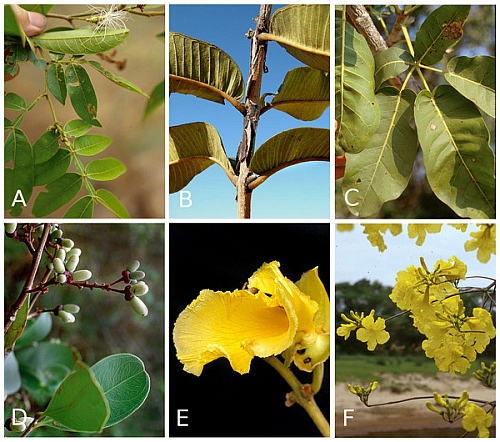Dr. Simon Queenborough is the senior author of the recent PeerJ article “Diversity and distribution of extra-floral nectaries in the cerrado savanna vegetation of Brazil”.

Simon did his undergraduate degree at St. Catharine’s College Cambridge, MSc at the Royal Botanic Garden Edinburgh, and PhD at Aberdeen University, before moving to the US. He is interested in how individuals, species and communities interact over ecological and evolutionary time, particularly plants and especially if they are in tropical forests. He has a long-term project monitoring reproduction in 16 species of co-existing nutmeg trees in the Amazon.
PJ: Tell us a bit about the research you published with us, and what is the take-home message of your article?
SQ: The manuscript comprises a first step in my lab in thinking about plant defenses and how we can begin to develop large-scale methods to address questions about their evolution and ecology. Many such inter-site comparisons are compromised by sites with very different evolutionary and biogeographic histories – working in one biome that extends over such a large area as the Cerrado allows us to minimize these effects. We found evidence supporting recent work contradicting the traditional idea that plants are better defended at lower latitudes.
PJ: Your study was conducted in the Cerrado, Brazil. Why did you choose this area?
SQ: The availability of data. I did my masters at the Royal Botanic Garden Edinburgh (RBGE, UK). They have worked in the Cerrado vegetation for a long time and have compiled lots of very high quality data, including the dataset we used, which they recently made openly available. Because of the intensive work of the taxonomists at RBGE, all taxa in the dataset are reliably identified to species and are consistent across all sites, something that sets this data apart from other large plot networks.
PJ: What challenges did you face while doing this research?
SQ: Finding decent covariate data. Good estimates of climate are available, but it would also be nice to have estimates of productivity and as we say in the article, ant diversity, at each vegetation site.
PJ: Where do you hope to go from here?What is next in your research?
SQ: Two undergraduates in the lab are investigating other aspects of the Cerrado vegetation using the same dataset and digitized herbarium specimens, looking at how leaf area varies as a function of climate. I would like to collect other defense trait data as well, and also build in a phylogenetic component to the analyses.
PJ: How did you first hear about PeerJ, and what persuaded you to submit to us?
SQ: I think that I first heard about PeerJ on Twitter. I am sympathetic to the arguments for Open Access to research, and it seemed like an interesting alternative to PLOS ONE, especially in terms of the funding mechanism.
PJ: This paper is the result of undergraduate research. Was it hard to convince your student to publish in an Open Access journal?
SQ: No, they are usually very obedient! Seriously, John decided not to pursue a career in science, so there was no pressure on him to publish in a more established journal. Even Nobel Prize winners are encouraging Open Access nowadays!
PJ: As a PeerJ Author, how would you describe your overall experience with us, in terms of submission, review, and production?
SQ: My experience was very good. Reviews were good and quick; the production team is very open and ready to interact with you (make sure this doesn’t change as you get bigger!).
PJ: PeerJ encourages Authors to make their review comments visible. Why did you choose to reproduce the complete peer-review history of your article?
SQ: They were good reviews! Also, it is always curious to see how some papers manage to get published; making reviews open in this way is a step in that direction; although the benefits of (double) blind peer-review (whether visible or not) are obviously significant.
PJ: Anything else you would like to talk about?
SQ: Merging data from various sources (in this case a species x site vegetation matrix and trait data from another dataset with additional data from the literature) allowed us to address an interesting field-based question without leaving campus – something that is often prohibitive for undergraduates.
PJ: Many thanks!
We leave you with Fig 1 from the article. Dont forget that from now until end-2013, we are running a special offer for free PeerJ Publications.


